Bing Liu
Jack
A Deep Reinforcement Learning Approach for Ramp Metering Based on Traffic Video Data
Dec 09, 2020
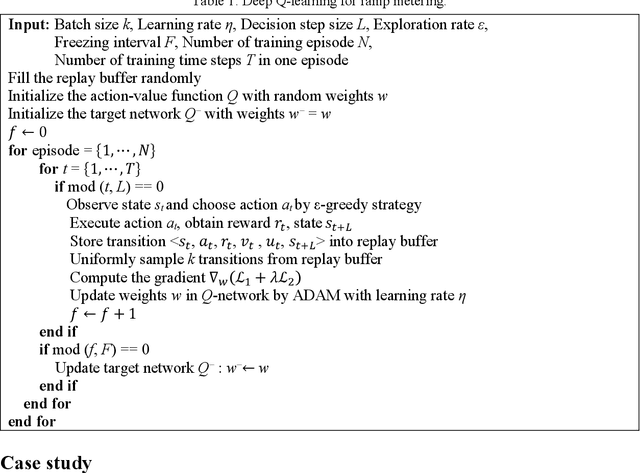
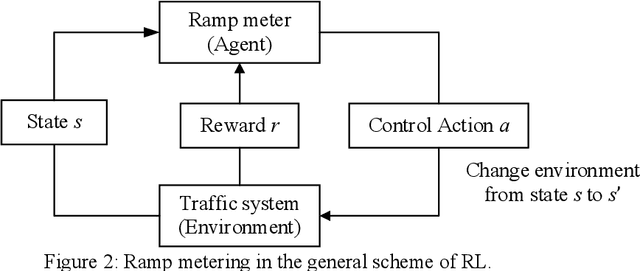
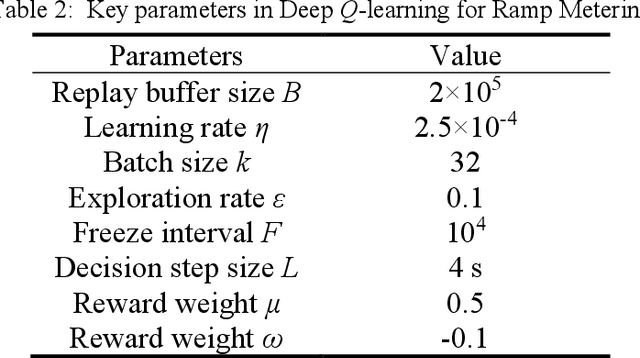
Abstract:Ramp metering that uses traffic signals to regulate vehicle flows from the on-ramps has been widely implemented to improve vehicle mobility of the freeway. Previous studies generally update signal timings in real-time based on predefined traffic measures collected by point detectors, such as traffic volumes and occupancies. Comparing with point detectors, traffic cameras-which have been increasingly deployed on road networks-could cover larger areas and provide more detailed traffic information. In this work, we propose a deep reinforcement learning (DRL) method to explore the potential of traffic video data in improving the efficiency of ramp metering. The proposed method uses traffic video frames as inputs and learns the optimal control strategies directly from the high-dimensional visual inputs. A real-world case study demonstrates that, in comparison with a state-of-the-practice method, the proposed DRL method results in 1) lower travel times in the mainline, 2) shorter vehicle queues at the on-ramp, and 3) higher traffic flows downstream of the merging area. The results suggest that the proposed method is able to extract useful information from the video data for better ramp metering controls.
Attention Aware Cost Volume Pyramid Based Multi-view Stereo Network for 3D Reconstruction
Nov 25, 2020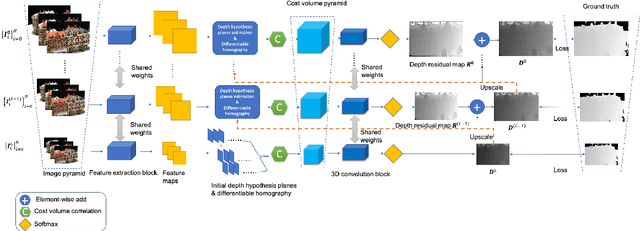
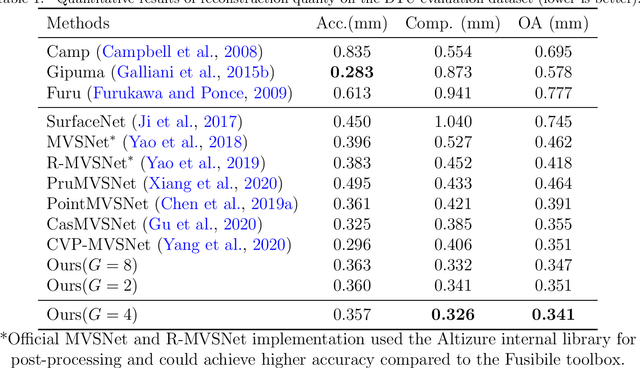
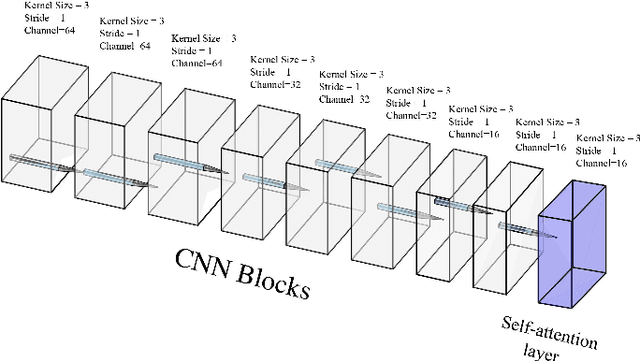

Abstract:We present an efficient multi-view stereo (MVS) network for 3D reconstruction from multiview images. While previous learning based reconstruction approaches performed quite well, most of them estimate depth maps at a fixed resolution using plane sweep volumes with a fixed depth hypothesis at each plane, which requires densely sampled planes for desired accuracy and therefore is difficult to achieve high resolution depth maps. In this paper we introduce a coarseto-fine depth inference strategy to achieve high resolution depth. This strategy estimates the depth map at coarsest level, while the depth maps at finer levels are considered as the upsampled depth map from previous level with pixel-wise depth residual. Thus, we narrow the depth searching range with priori information from previous level and construct new cost volumes from the pixel-wise depth residual to perform depth map refinement. Then the final depth map could be achieved iteratively since all the parameters are shared between different levels. At each level, the self-attention layer is introduced to the feature extraction block for capturing the long range dependencies for depth inference task, and the cost volume is generated using similarity measurement instead of the variance based methods used in previous work. Experiments were conducted on both the DTU benchmark dataset and recently released BlendedMVS dataset. The results demonstrated that our model could outperform most state-of-the-arts (SOTA) methods. The codebase of this project is at https://github.com/ArthasMil/AACVP-MVSNet.
Lifelong Knowledge Learning in Rule-based Dialogue Systems
Nov 19, 2020Abstract:One of the main weaknesses of current chatbots or dialogue systems is that they do not learn online during conversations after they are deployed. This is a major loss of opportunity. Clearly, each human user has a great deal of knowledge about the world that may be useful to others. If a chatbot can learn from their users during chatting, it will greatly expand its knowledge base and serve its users better. This paper proposes to build such a learning capability in a rule-based chatbot so that it can continuously acquire new knowledge in its chatting with users. This work is useful because many real-life deployed chatbots are rule-based.
MP-ResNet: Multi-path Residual Network for the Semantic segmentation of High-Resolution PolSAR Images
Nov 16, 2020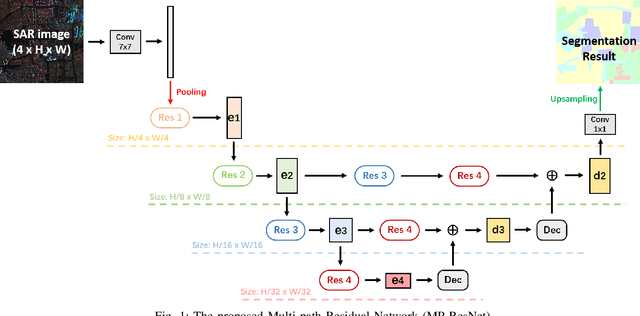
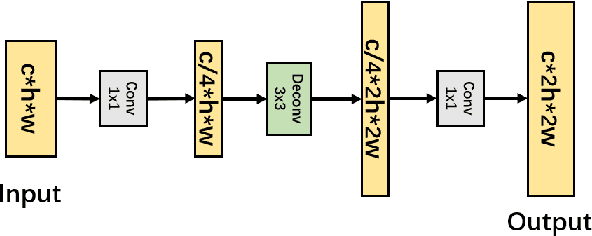
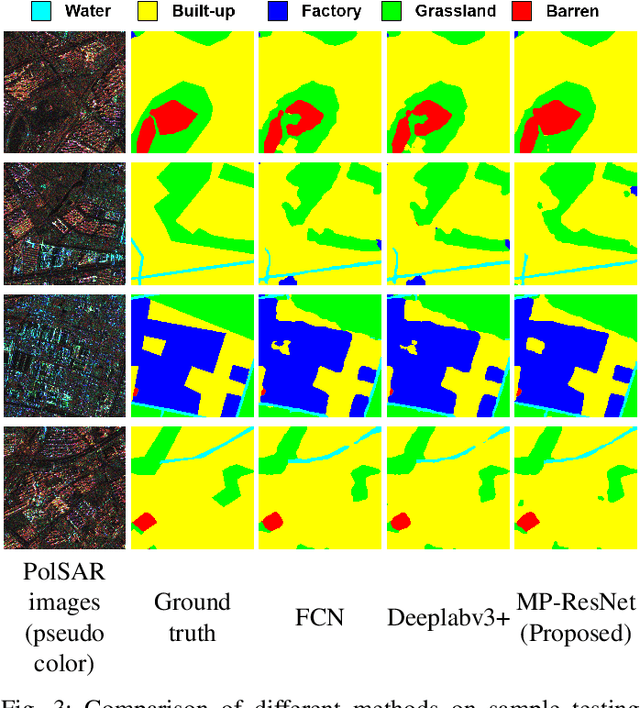
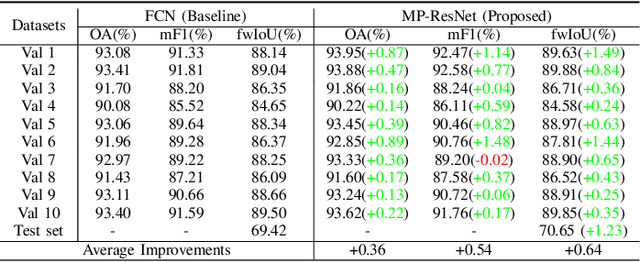
Abstract:There are limited studies on the semantic segmentation of high-resolution Polarimetric Synthetic Aperture Radar (PolSAR) images due to the scarcity of training data and the inference of speckle noises. The Gaofen contest has provided open access of a high-quality PolSAR semantic segmentation dataset. Taking this chance, we propose a Multi-path ResNet (MP-ResNet) architecture for the semantic segmentation of high-resolution PolSAR images. Compared to conventional U-shape encoder-decoder convolutional neural network (CNN) architectures, the MP-ResNet learns semantic context with its parallel multi-scale branches, which greatly enlarges its valid receptive fields and improves the embedding of local discriminative features. In addition, MP-ResNet adopts a multi-level feature fusion design in its decoder to make the best use of the features learned from its different branches. Ablation studies show that the MPResNet has significant advantages over its baseline method (FCN with ResNet34). It also surpasses several classic state-of-the-art methods in terms of overall accuracy (OA), mean F1 and fwIoU, whereas its computational costs are not much increased. This CNN architecture can be used as a baseline method for future studies on the semantic segmentation of PolSAR images. The code is available at: https://github.com/ggsDing/SARSeg.
Understanding Pre-trained BERT for Aspect-based Sentiment Analysis
Oct 31, 2020
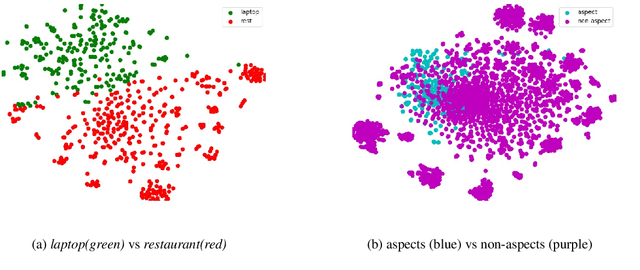


Abstract:This paper analyzes the pre-trained hidden representations learned from reviews on BERT for tasks in aspect-based sentiment analysis (ABSA). Our work is motivated by the recent progress in BERT-based language models for ABSA. However, it is not clear how the general proxy task of (masked) language model trained on unlabeled corpus without annotations of aspects or opinions can provide important features for downstream tasks in ABSA. By leveraging the annotated datasets in ABSA, we investigate both the attentions and the learned representations of BERT pre-trained on reviews. We found that BERT uses very few self-attention heads to encode context words (such as prepositions or pronouns that indicating an aspect) and opinion words for an aspect. Most features in the representation of an aspect are dedicated to the fine-grained semantics of the domain (or product category) and the aspect itself, instead of carrying summarized opinions from its context. We hope this investigation can help future research in improving self-supervised learning, unsupervised learning and fine-tuning for ABSA. The pre-trained model and code can be found at https://github.com/howardhsu/BERT-for-RRC-ABSA.
NUANCED: Natural Utterance Annotation for Nuanced Conversation with Estimated Distributions
Oct 24, 2020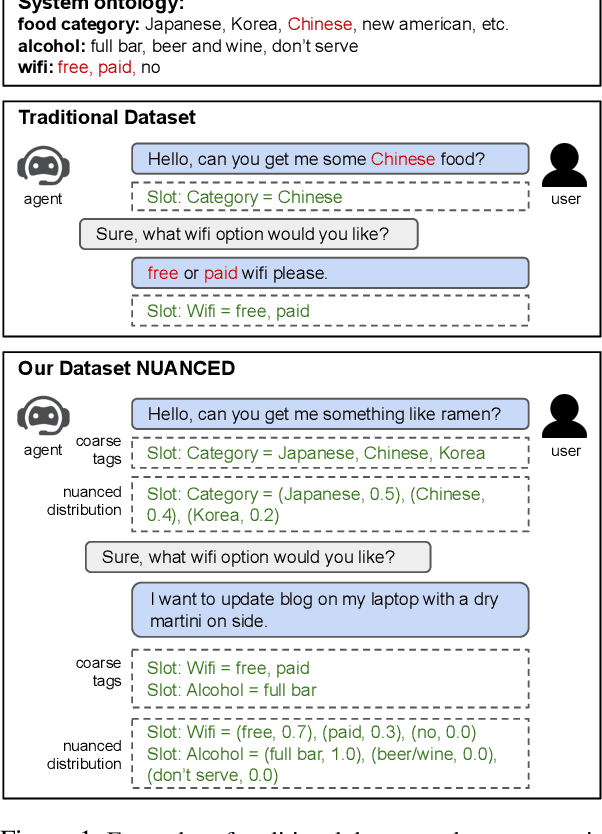


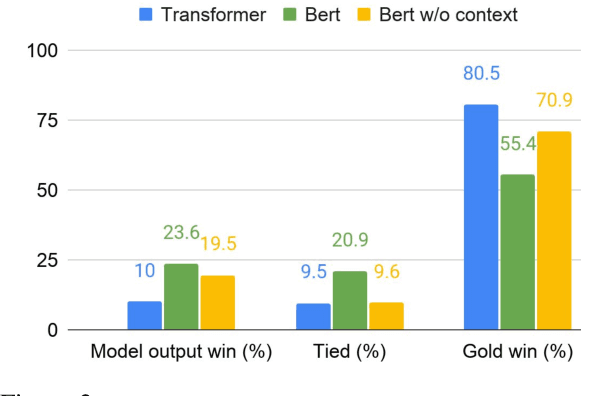
Abstract:Existing conversational systems are mostly agent-centric, which assumes the user utterances would closely follow the system ontology (for NLU or dialogue state tracking). However, in real-world scenarios, it is highly desirable that the users can speak freely in their own way. It is extremely hard, if not impossible, for the users to adapt to the unknown system ontology. In this work, we attempt to build a user-centric dialogue system. As there is no clean mapping for a user's free form utterance to an ontology, we first model the user preferences as estimated distributions over the system ontology and map the users' utterances to such distributions. Learning such a mapping poses new challenges on reasoning over existing knowledge, ranging from factoid knowledge, commonsense knowledge to the users' own situations. To this end, we build a new dataset named NUANCED that focuses on such realistic settings for conversational recommendation. Collected via dialogue simulation and paraphrasing, NUANCED contains 5.1k dialogues, 26k turns of high-quality user responses. We conduct experiments, showing both the usefulness and challenges of our problem setting. We believe NUANCED can serve as a valuable resource to push existing research from the agent-centric system to the user-centric system. The code and data will be made publicly available.
Adding Chit-Chats to Enhance Task-Oriented Dialogues
Oct 24, 2020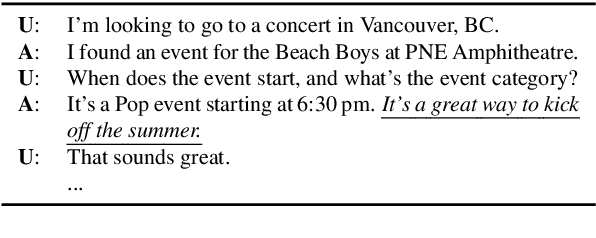

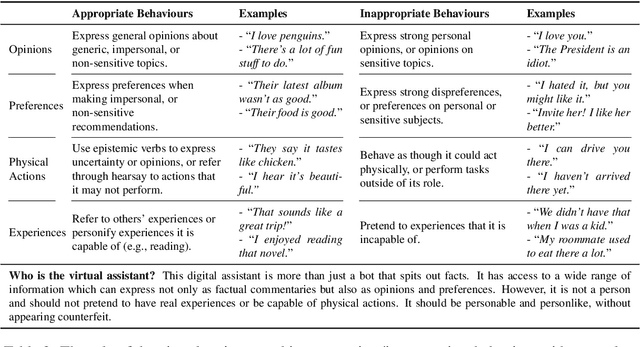
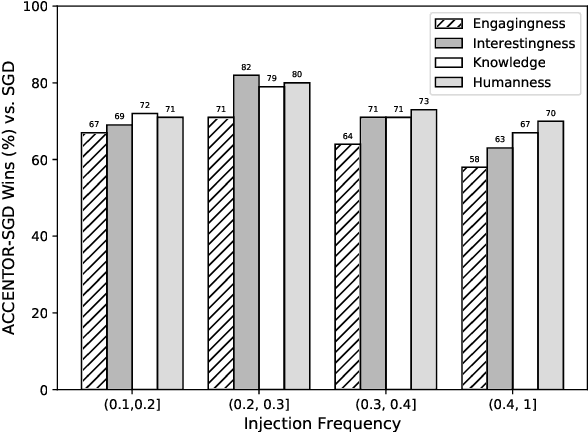
Abstract:The existing dialogue corpora and models are typically designed under two disjoint motives: while task-oriented systems focus on achieving functional goals (e.g., booking hotels), open-domain chatbots aim at making socially engaging conversations. In this work, we propose to integrate both types of systems by Adding Chit-Chats to ENhance Task-ORiented dialogues (ACCENTOR), with the goal of making virtual assistant conversations more engaging and interactive. Specifically, we propose a flexible approach for generating diverse chit-chat responses to augment task-oriented dialogues with minimal annotation effort. We then present our new chit-chat annotations to 23.8K dialogues from the popular task-oriented datasets (Schema-Guided Dialogue and MultiWOZ 2.1) and demonstrate their advantage over the originals via human evaluation. Lastly, we propose three new models for ACCENTOR explicitly trained to predict user goals and to generate contextually relevant chit-chat responses. Automatic and human evaluations show that, compared with the state-of-the-art task-oriented baseline, our models can code-switch between task and chit-chat to be more engaging, interesting, knowledgeable, and humanlike, while maintaining competitive task performance.
A Knowledge-Driven Approach to Classifying Object and Attribute Coreferences in Opinion Mining
Oct 11, 2020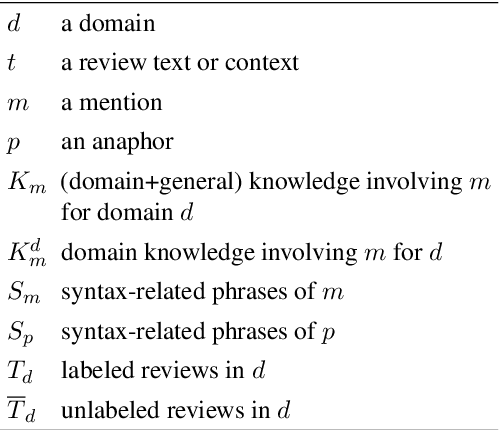
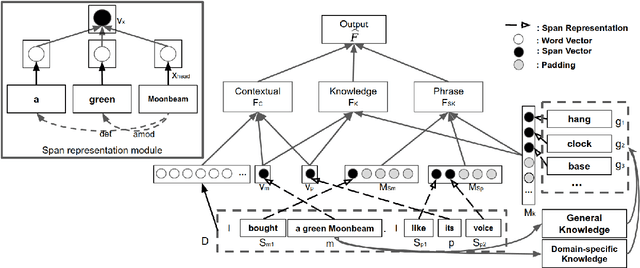

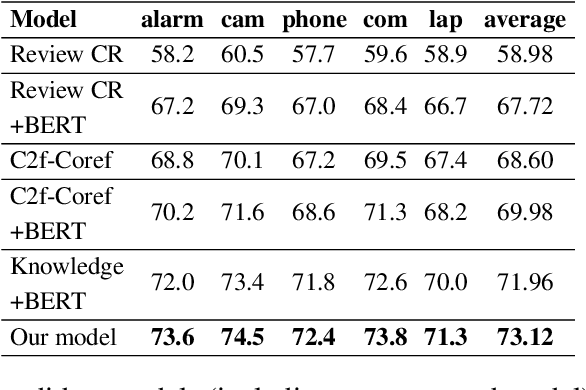
Abstract:Classifying and resolving coreferences of objects (e.g., product names) and attributes (e.g., product aspects) in opinionated reviews is crucial for improving the opinion mining performance. However, the task is challenging as one often needs to consider domain-specific knowledge (e.g., iPad is a tablet and has aspect resolution) to identify coreferences in opinionated reviews. Also, compiling a handcrafted and curated domain-specific knowledge base for each domain is very time consuming and arduous. This paper proposes an approach to automatically mine and leverage domain-specific knowledge for classifying objects and attribute coreferences. The approach extracts domain-specific knowledge from unlabeled review data and trains a knowledgeaware neural coreference classification model to leverage (useful) domain knowledge together with general commonsense knowledge for the task. Experimental evaluation on realworld datasets involving five domains (product types) shows the effectiveness of the approach.
Controllable Text Generation with Focused Variation
Sep 25, 2020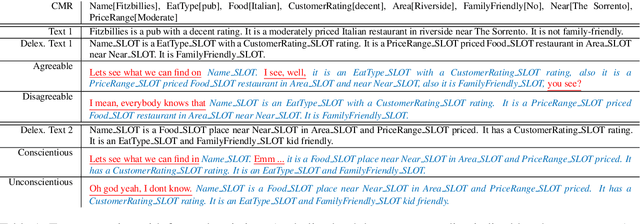
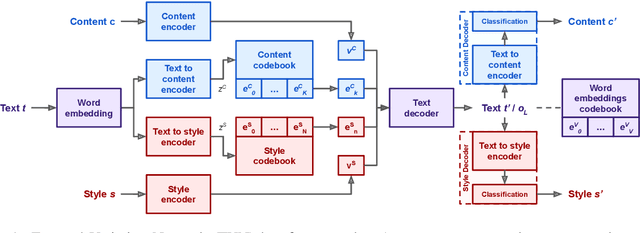
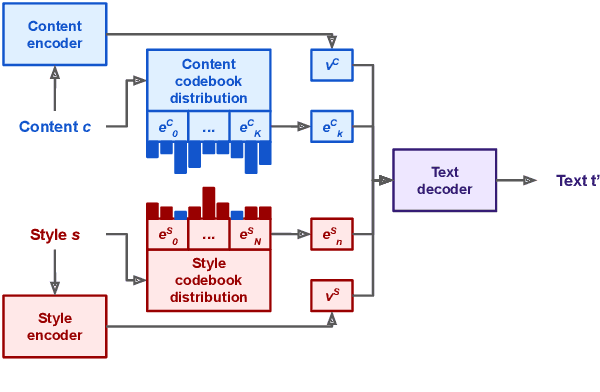
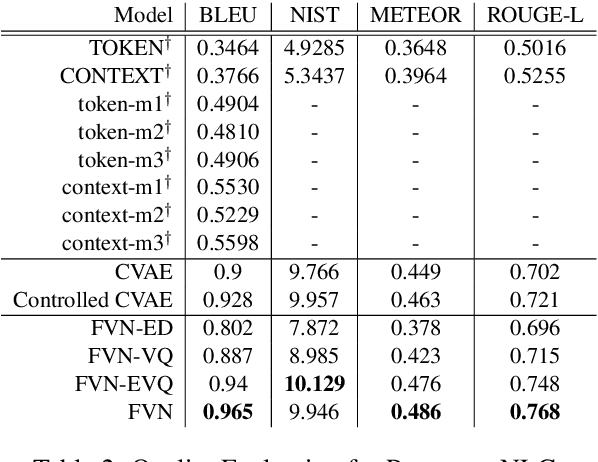
Abstract:This work introduces Focused-Variation Network (FVN), a novel model to control language generation. The main problems in previous controlled language generation models range from the difficulty of generating text according to the given attributes, to the lack of diversity of the generated texts. FVN addresses these issues by learning disjoint discrete latent spaces for each attribute inside codebooks, which allows for both controllability and diversity, while at the same time generating fluent text. We evaluate FVN on two text generation datasets with annotated content and style, and show state-of-the-art performance as assessed by automatic and human evaluations.
Text Classification with Novelty Detection
Sep 23, 2020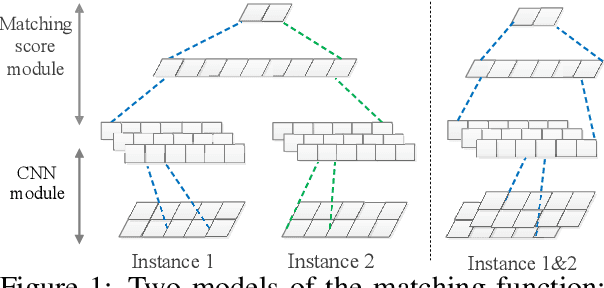
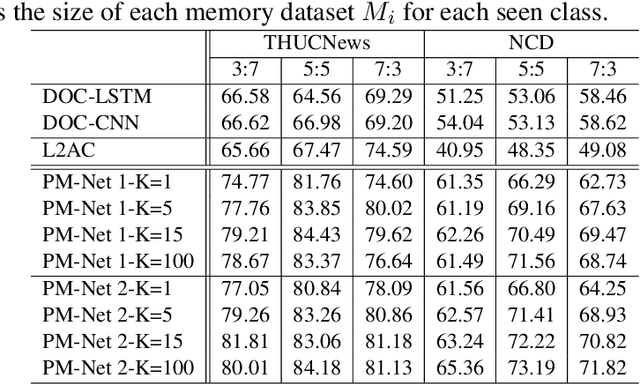
Abstract:This paper studies the problem of detecting novel or unexpected instances in text classification. In traditional text classification, the classes appeared in testing must have been seen in training. However, in many applications, this is not the case because in testing, we may see unexpected instances that are not from any of the training classes. In this paper, we propose a significantly more effective approach that converts the original problem to a pair-wise matching problem and then outputs how probable two instances belong to the same class. Under this approach, we present two models. The more effective model uses two embedding matrices of a pair of instances as two channels of a CNN. The output probabilities from such pairs are used to judge whether a test instance is from a seen class or is novel/unexpected. Experimental results show that the proposed method substantially outperforms the state-of-the-art baselines.
 Add to Chrome
Add to Chrome Add to Firefox
Add to Firefox Add to Edge
Add to Edge